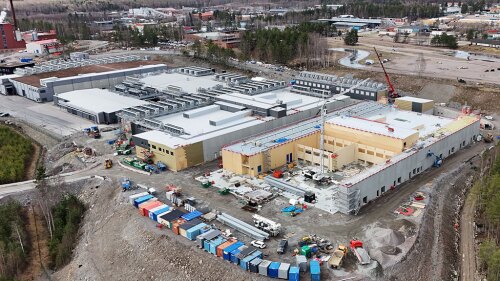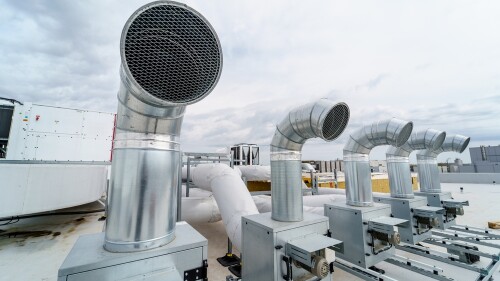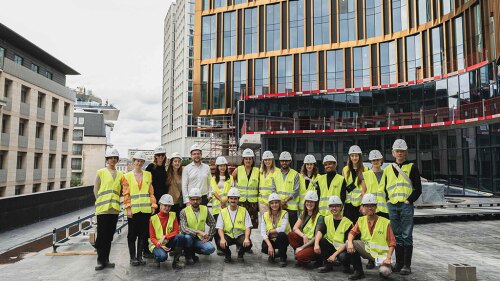Aimee Witteman joined the Urban Land Institute in May 2025 as chief impact officer, leading ULI’s Centers, Initiatives, and Advisory Services. Based in Washington, D.C., she brings deep experience in climate innovation, philanthropy, and policy, as well as past leadership roles at Rewiring America, the Energy Foundation, the McKnight Foundation, and the U.S. Department of Energy.
We sat down with Witteman ahead of Climate Week NYC to hear her perspective on ULI’s evolving role at the intersection of real estate, decarbonization, and land use.
Urban Land: With Climate Week NYC approaching, what’s top of mind for you?
Aimee Witteman: I’m eager to see how real estate leaders are moving from pledges to proof—showing what decarbonization looks like on the ground. That’s exactly where ULI is leaning in with our new ULI Impact Lab, which brings together our Randall Lewis Center for Sustainability, Terwilliger Center for Housing, Center for Real Estate Economics and Capital Markets, and Advisory Service Panels to strategically leverage analysis, capital, and technical assistance to test and scale solutions. For example, ULI’s Greenprint program is already helping owners and investors track and cut carbon across portfolios, and our Net Zero Imperative program is testing pathways for developers to meet ambitious clean energy standards.
UL: Which decarbonization strategies do you see thriving right now?
Witteman: The market is rewarding projects that cut carbon and reduce risk. Electrification, high-performance buildings, and resilient land use aren’t just climate strategies—they’re value strategies. In Asia, for instance, ULI members are exploring green steel supply chains, which could transform both construction and emissions profiles. Across markets, we’re seeing that early movers gain stronger returns, better tenant demand, and lower exposure. Just as importantly, we’re seeing opportunities to pair these strategies with housing affordability, so communities benefit from lower costs, cleaner, better building technologies; and greater resilience.
UL: What challenges does ULI face in the years ahead?
Witteman: Our biggest challenges, and opportunities, are focus, adaptability, and speed. The built environment accounts for nearly 40 percent of global emissions, and we’re also facing a housing affordability crisis. Sustainability and affordability are two of the defining challenges for real estate, and ULI is one of the few organizations that can bridge them. That’s why ULI’s Advisory Services Panels are so important. They allow us to test solutions on the ground, balancing both sustainability and affordability, with the people closest to the work. We do these panels in partnership with our 52 local District Councils spread across most states in the U.S., and in Canada and Mexico.
We are also doing our work in a rapidly changing and often fraught political and economic environment where new technologies like AI are disrupting business and the energy sector in significant ways. ULI Impact Lab is designed to be nimble and forward-looking—addressing today’s challenges and opportunities while anticipating what lies ahead, so ULI members stay informed and at the forefront of the field.
UL: What makes you hopeful about ULI’s role?
Witteman: ULI occupies a unique place in the field: We bring together capital, practitioners, and the public sector in ways no one else can. As ULI member Linda Mandolini puts it, “ULI is where for-profit and nonprofit sectors intersect, where policy and production meet.” Initiatives like Greenprint, the Net Zero Imperative, and our market transformation work in Asia are proving that building zero-carbon, resilient, and affordable communities makes business sense. And because of our global reach, those lessons travel quickly and at scale. With trillions in assets under management, ULI’s members are not only market leaders, they are also deeply invested in the well-being of their communities. That potential for catalytic change is what drew me here.
UL: How will you measure impact?
Witteman: Impact isn’t about producing reports or describing the challenges—it’s about driving real market transformation. We will track how ULI members adopt new standards and technologies, how capital flows evolve, and how communities benefit from healthier, lower-carbon development. We will also measure sector-wide progress in areas where ULI members lead, such as reducing energy use intensity, advancing electrification and embodied carbon solutions, and delivering projects that unite emissions reduction with housing affordability—demonstrating ULI’s unique ability to bridge these mission priorities.
UL: From your past roles, what lessons do you bring to ULI?
Witteman: Whether at DOE, McKnight, or Rewiring America, I’ve seen how innovation takes off when you combine policy, philanthropy, and private capital. At ULI, we can bring those levers together, around the built environment, with the ULI Impact Lab as the catalyst.
UL: Where can real estate professionals go for support in building lower-carbon developments?
Witteman: Look at what’s already happening: portfolios cutting costs through Greenprint, cities designing for resilience with Advisory Service Panels, and Asian markets piloting low-carbon materials like green steel. The momentum is real. My advice? Spend more time with the innovators, the doers.
Related reading:
ULI’s Guide to Climate Week NYC 2025 for Real Estate





